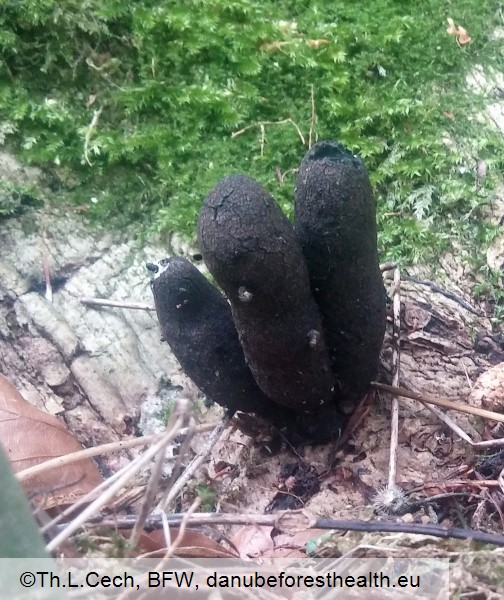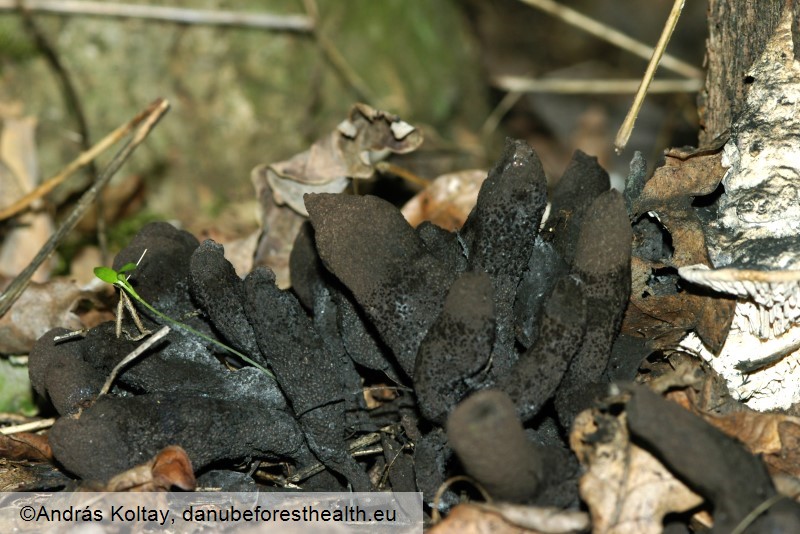Fungi
Dead man's finger
Xylaria polymorpha
Thomas Cech
|
|

Fig. 1. Xylaria polymorpha, fruiting bodies

Fig. 2. Fruiting bodies
DETECTION PERIOD:
whole season
DESCRIPTION:
Fruiting bodies perithecia, embedded in a irregularly formed and sized more or less club-shaped hard stroma, 10-40 mm in diametre and 3 to 10 cm long; in spring grey-green due to coverage by a white powder (asexual spores), later totally black and with a surface revealing minute warts (shortly papillate openings of the individual perithecia (visible by hand-lens); flesh whitish, fibrous, corky, later yellowish to blackish; spore print color: cream.
HABITAT:
Various broadleaved tree species, especially Fraxinus, Tilia, Malus, Fagus; common on rotten parts of stems and roots in different stages of decomposition; forests and urban sites.
STATUS:
Very common.
IMPACT:
Mainly saprophytic as early stage-colonizer of wood causing excessive rot; parasitic on root systems and butt of broadleaved trees infecting through wounds at the stem base; frequently associated with basal stem-necroses of living ashes weakened by ash-dieback.
SIMILAR SPECIES:
Rather none; at most Daldinia concentrica, this species however with round and not elongated fruiting structures showing a concentric zonation when dissected.
|